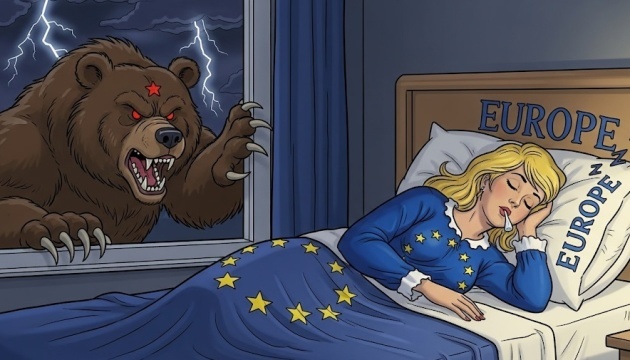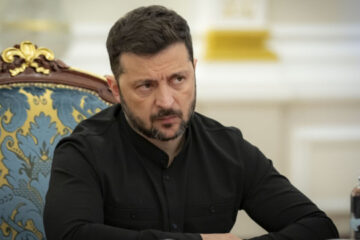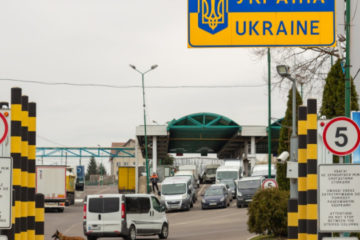
In light of recent events surrounding the “progress in negotiations with Russia”, it is pretty surprising, at first glance, that US President Donald Trump signed an executive order imposing additional tariffs against India (and potentially other countries, since the document has a framework nature) for buying Russian oil.
It is symbolic that this happened immediately after Putin’s meeting with Witkoff. But the main thing is that the document designates Russia as “an unusual and extraordinary threat to U.S. national security”. It is therefore absolutely no coincidence that the document contains only three mentions of India and as many as 17 mentions of Russia.
Poland and Germany are rapidly rearming
Si vis pacem, para bellum is a famous Latin saying that translates as “if you want peace, prepare for war”. The vast majority of European leaders have understood that the carefree life within the paradigm of “the USA guarantees security, and Russia – cheap energy resources” is finally over.
A very telling example is a million 155-millimeter artillery shells that were to be sent to Ukraine. Six months after the promise, Europe was forced to admit that a potent alliance of 27 economies could not produce or purchase such a quantity, while the DPRK easily provided them to the Russian Federation from drawdowns on current stockpiles. That is, one of the world’s poorest countries prevailed over the entire powerful continent.
This came as a cold shower for it. On May 27, the EU Council approved the Security Action for Europe (SAFE) instrument that provides for low-interest loans worth up to 150 billion euros to support increased defense investment and procurement. Eighteen EU countries applied for funding from the SAFE fund, with the overall amount of requests having reached 127 billion euros (Poland alone has asked for around 45 billion euros). Besides, the EU has activated a national “escape clause” on fiscal rules for 15 countries. The clause allows for a temporary deviation from the net expenditure path set by the Council. This deviation is typically limited to a maximum of 1.5% of GDP in additional defense expenditure for each year of activation, up to 2028.
As for individual countries, Germany, for example, will spend around 2.4% of GDP on defense this year, with a pledge to increase this to 3.5% within four years. A special national fund and significant investments in infrastructure worth up to 500 billion euros are also under discussion. Berlin is expected to spend 162 billion euros on defense in 2029. Additionally, Germany is set to disburse 9 billion euros annually to support Ukraine.
The German government is preparing an extensive package of six dozen multibillion-euro defense procurement orders, including 20 Eurofighter fighter jets, hundreds of Leopard tanks, up to 8,500 armored vehicles, as well as uncrewed aerial vehicles, for approval by the Bundestag.
Importantly, Germany’s defense spending will be focused on Europe. Berlin is keen to shift defense spending to regional manufacturers in order to make the continent less dependent on American ones. Given Europe’s dependence on the United States, which provides most of its requirement for satellite-based communications used by military forces, Germany is on track to invest more than 15 billion euros in modernizing its military satellite infrastructure in the coming years.
Poland has signed a second multi-billion-dollar deal with South Korean industrial and defense group Hyundai Rotem for the supply of 180 battle tanks worth USD 6.5 billion. This new agreement involves a large element of manufacture in Poland as it looks to expand its domestic defense industry, with 61 of the tanks in the latest order to be produced at a plant in Gliwice in southern Poland owned by Bumar-Labedny.
As a result, Poland will have a fleet of over 1,100 tanks by 20230 – more than Germany, France, Italy and the United Kingdom combined. Poland currently spends 4.7% of GDP on defense, and plans to increase this to 5% by 2026.
EU transport infrastructure is unsuited to support redeploying forces in the event of war with Russia
These beautiful figures, however, are hiding a host of problems. In particular, EU authorities have announced an extensive modernization of highway and rail infrastructures to reduce the time from “weeks and months to a few hours, at most days“ it takes to support rapid troop and equipment deployments in the event of a potential military confrontation with Russia.
Europe’s existing transport corridors, which were created without account taken of the need to move armies across NATO territory, are unsuitable to handle rapid transport of tanks, infantry and military cargo. Tanks and vehicles moving to Europe’s eastern flank will be stuck in tunnels and border controls – or worse, collapse bridges, and get tangled in red tape between EU and non-EU member states to reduce delays caused by bureaucratic processes with “tanks being stuck in paperwork”, according to EU Commissioner for Transport Apostolos Tzitzikostas. “We have old bridges that need to be upgraded,” Mr. Tzitzikostas said, adding, “We have narrow bridges that need to be widened. And we have nonexistent bridges to be built.”
Meanwhile, the Dutch Ministry of Defense and Dutch national railway operator NS (Dutch Railways) are negotiating the sale of 24 decommissioned train cars to reconfigure these into mobile emergency hospitals that can serve as transport for wounded soldiers. The Ministry aims to have these mobile hospitals ready by 2026 and may end up buying 24+ more decommissioned rail wagons. The next step is contracting dozens of logistics companies to handle the transport of tanks, ammunition and other equipment. Initially, the Ministry is looking to engage at least two companies into its logistics ecosystem, eventually bringing the total to 80.
And while the EU is “looking for,” “studying,” “planning,” and installing iron barriers on border bridges with Russia (as Estonia is doing), Ukrainians are warning Europe against preparing for the war of the past. The commander of the Ukrainian Armed Forces’ Unmanned Systems Forces (USF), Robert ”Magyar” Browdy recently explained to the Western audience why NATO will be unable to hold out a Russian invasion unless it changes its outdated security doctrines. Drones are currently shaping a new reality in the war NATO is not ready for, Magyar argues. Currently, none of NATO member countries is capable of shielding its cities from attacks with Shahed drones that will fly non-stop by two to three hundreds per day.
“Thanks to drones, a ‘kill zone 20 or so kilometers wide has to be set up along the front line. Afterwards, infantry soldiers have to be replaced with ground robotic platforms to perform logistics operations. The next step is to build a multi-layered, echeloned anti-drone wall that will stop all strike and reconnaissance UAVs,” explains Browdy.
No slogans will shield from Russia
But the truly conceptual trouble for the Europeans was outlined by Yigal Levin, a renowned defense analyst and senior lieutenant in the Israel Defense Forces’ ground force. He warns that “Europe has no other choice for salvation but to speed up militarization. No reforms will help coming out from a sweet dope dream and moving away from aggressively imposed tolerance – even towards those who want to devour you. Here, slogans can’t save. But militarization can. It does not tolerate grayness and a multiplicity of meanings, a postmodern jelly where “everything is complicated”. Militarization offers an extremely simple picture of the world: black and white. There are them, and there are us.
Russia is already attacking Europe, as Chancellor Merz rightly noted recently, and it will do everything it can to sow controversies. It is going to continue investing in the radical right and left, in activists and loudmouthed leaders of a multiplicity of influence groups. So that they sow and multiply postmodernism where ‘everything is complicated’, ‘we’ll figure it out’, ‘let’s organize symposia, panels and discussions’…
Generous Moscow will be happy to throw money for this. For Moscow, it matters most to make sure Europe does whatever it wants except prepare for a big war and militarize. The future does not belong to philosophers, activists, academics, and good guys who advocate peace. The future belongs to soldiers. And to those who lead these soldiers.”
Brigadier General Douglas MacArthur, one of the most distinguished American military leaders of the 20th century, once said: “The history of military failure can be summed up in two words: too late. It is too late to understand the deadly aims of the potential enemy; it is too late to realize the mortal danger; it is too late to prepare; it is too late to unite all possible forces to resist; it is too late to create a relationship with one’s friends.”
It is to be hoped that Europe is finally waking up from its sweet swoony dream that has lasted the past 80 years. Otherwise, it may indeed be too late.
Max Melzer



